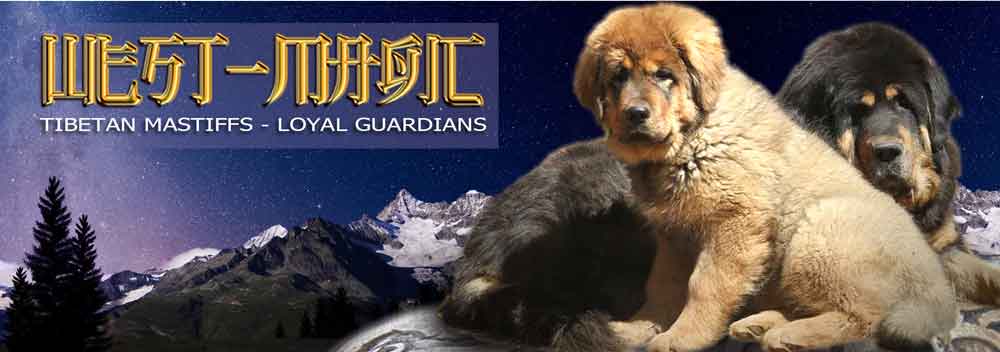Height: 25-28 inches (61-71 cm.)
Weight: 140-170 pounds (64-78 kg.)
Appearance
Illustration of a Tibetan mastiff skull by Frédéric Cuvier
Currently, some breeders differentiate between two "types" of Tibetan Mastiff: The Do-khyi and the "Tsang-khyi". The "Tsang-khyi" (which, to a Tibetan, means only "dog from Tsang") is also referred to as the "monastery type", described as generally taller, heavier, more heavily boned, with more facial wrinkling and haw than the "Do-khyi" or "nomad type". Both "types" are often produced in the same litter.
Males can reach heights up to 31+ inches (80+cm) at the withers, although the standard for the breed is typically in the 25 to 28 inch (61 to 72 cm) range. The heaviest TM on record may be one weighing over 130 kg (286.6 Lbs)[citation needed] but dogs bred in the West are more typically between 140 lb (64 kg) to 180 lb (82 kg)—especially if they are in good condition and not overweight. The enormous dogs being produced in some Western and some Chinese kennels would have "cost" too much to keep fed to have been useful to nomads; and their questionable structure would have made them well-nigh useless as livestock guardians.
The Tibetan Mastiff is considered a primitive breed. It typically retains the instincts which would be required for it to survive in Tibet, including canine pack behaviour. In addition, it is one of the few primitive dog breeds that retains a single oestrus per year instead of two, even at much lower altitudes and in much more temperate climates than its native climate. This characteristic is also found in wild canids such as the wolf. Since its oestrus usually takes place during late fall, most Tibetan Mastiff ppies are born between December and January.[2>
Tibetan Mastiff at an international dog show in Poland.
Its double coat is long, subject to climate, and found in a wide variety of colors, including solid black, black & tan, various shades of gold, blue/gray, chocolate brown, the rarest being solid white.
The coat of a Tibetan Mastiff lacks the unpleasant "big-dog smell" that affects many large breeds. The coat, whatever its length or color(s), should shed dirt and odors. Although the dogs shed somewhat throughout the year, there is generally one great "molt" in late winter or early spring and sometimes another, lesser molt in the late summer or early fall. (Sterilization of the dog or bitch may dramatically affect the coat as to texture, density, and shedding pattern.)
Tibetan Mastiffs are shown under one standard in the West, but separated by the Indian breed standard into two varieties:[citation needed] Lion Head (smaller; exceptionally long hair from forehead to withers, creating a ruff or mane) and Tiger Head (larger; shorter hair).
SOURCE: http://en.wikipedia.org/wiki/Tibetan_Mastiff">http://en.wikipedia.org/wiki/Tibetan_Mastiff
Disclaimer: The information contained on this site is for information purposes only, and may not apply to your situation. The author, publisher, distributor and provider provide no warranty about the content or accuracy of content enclosed. Information provided is subjective. Keep this in mind when reviewing this guide.
Neither the Publisher nor Author shall be liable for any loss of profit or any other commercial damages resulting from use of this guide. All links are for
All links are for
information purposes only and are not warranted for content, accuracy, or any other implied or explicit purpose.
